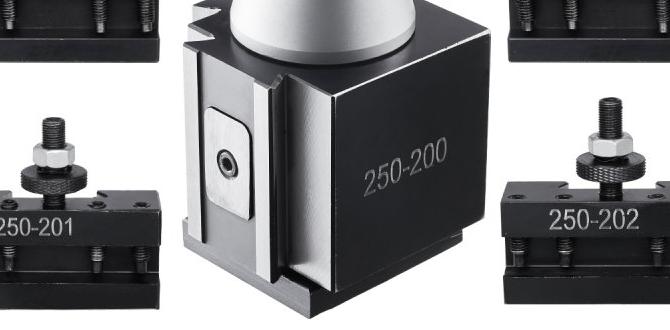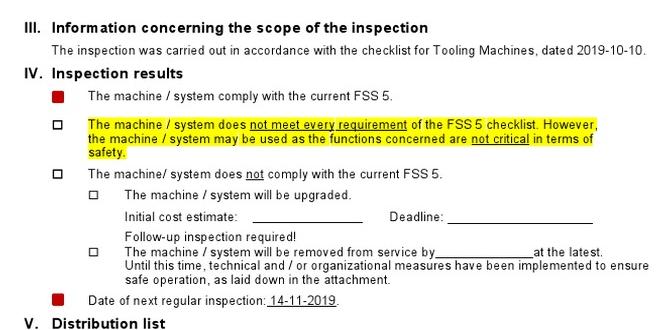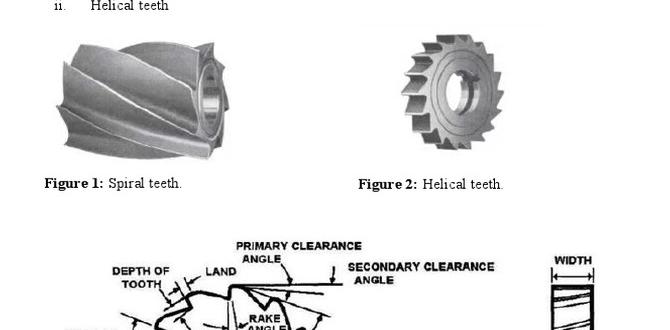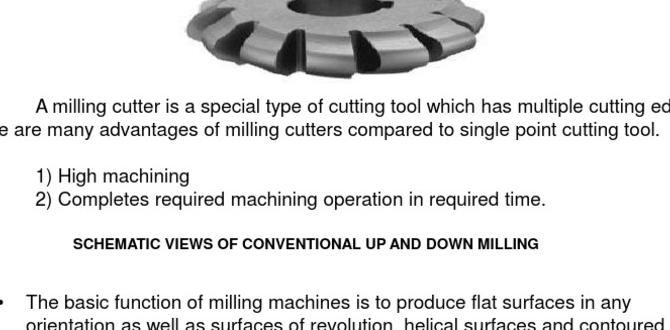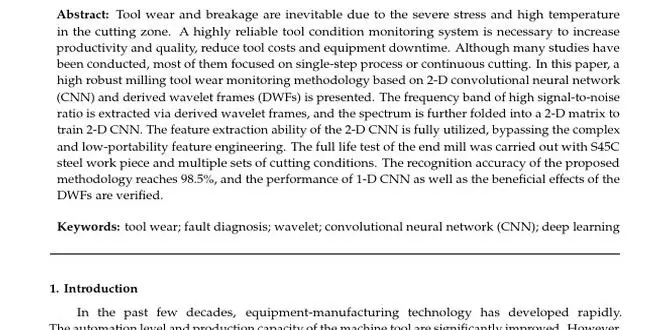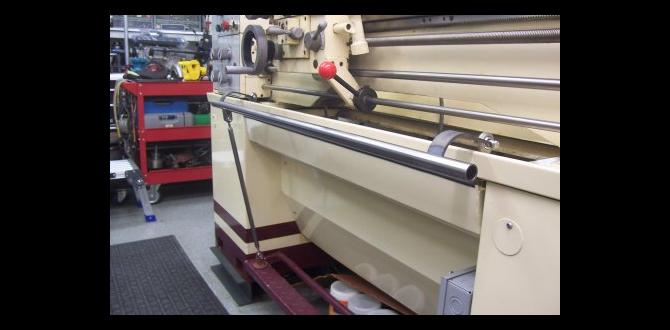Wood lathe vibration can be a real headache, but don’t worry! This guide offers proven, easy-to-follow solutions to identify and fix common causes, ensuring smoother, safer turning for beautiful results. Get back to enjoying your woodworking!
Welcome to Lathe Hub! If you’ve ever found your wood lathe shaking and rattling more than your morning coffee cup, you know how frustrating vibration can be. It’s a common issue, especially for beginners, and it can turn a relaxing woodworking session into a tense battle. Unwanted vibrations not only affect the quality of your finished piece, leading to uneven surfaces and tear-out, but they can also be a safety hazard. But here’s the good news: most wood lathe vibrations are easily diagnosed and fixed. We’ll walk through the common culprits step-by-step, so you can get your lathe running smoothly and confidently create those beautiful turned projects you’ve been dreaming of.
Understanding Wood Lathe Vibration
Vibration on a wood lathe is essentially unwanted movement. It happens when forces within the lathe system are out of balance or not properly supported. Think of it like trying to balance a wobbly wheel – it’s going to shake! For us woodturners, this shake can translate to a rough finish on our work, increased tool wear, and potential danger if the lathe becomes unstable. Recognizing the different types of vibrations and their sources is the first step to a solution.
Common Types of Wood Lathe Vibrations
Vibrations can feel and sound different, which helps pinpoint the problem. Let’s look at the most common sensations:
- Low-Frequency Rumble: This is a deep, steady vibration that often feels like the entire lathe is groaning. It’s usually related to the workpiece or the lathe’s fundamental balance.
- High-Frequency Buzzing/Chittering: This is a faster, sharper vibration, often accompanied by an audible buzz. It’s more likely to be associated with components that spin at higher speeds or loose parts.
- Intermittent Shaking: This vibration comes and goes, often linked to specific points in the turning process or when the tool engages the wood in a certain way.
Troubleshooting: Step-by-Step Solutions
Let’s dive into the most common causes of wood lathe vibration and how to fix them. We’ll start with the easiest checks and move towards slightly more involved solutions.
1. The Workpiece: The Most Common Culprit
The wood you’re turning is almost always the number one suspect for vibration. If the wood isn’t mounted securely, isn’t balanced, or has internal issues, it will rattle the lathe.
1.1. Secure Mounting
Is your wood blank truly locked down? Loose mounting is a picnic for vibration!
- Check Your Faceplate/Screw Chuck: Ensure screws are tight and biting well into the wood. If using a faceplate with a drive screw, make sure the screw is not stripped and is penetrating deeply enough.
- Verify the Spindle Lock: Even with the wood mounted, make sure the tailstock or banjo is firmly locked in place. A slight movement here can cause significant rattling.
- Faceplate/Chuck Runout: Mount the faceplate or chuck without wood. Spin it slowly. Does it wobble? If so, the faceplate itself or its mounting surface on the spindle might be warped or damaged.
1.2. Balancing the Blank
An off-center or irregular blank will cause massive vibrations, especially at higher speeds. This is particularly true for freshly cut logs or irregular pieces.
- Rough Shaping: Before mounting, take your blank to the drill press or a bandsaw and roughly round off the corners. This significantly reduces the initial imbalance.
- Center Mounting: Ensure the center of your blank is perfectly aligned with the center of the lathe spindle. A slightly off-center mount will vibrate exponentially as speed increases.
- Gradual Speed Increase: Especially when starting with a very irregular blank, begin turning at the lowest speed. As you get it reasonably round, you can gradually increase the speed.
1.3. Wood Condition
Sometimes, the wood itself is the problem.
- Cracks and Splits: A crack in the wood, especially one that opens up as you turn, will cause uneven drag and vibration.
- Warping: Wood that has dried unevenly can warp, creating an off-center turning profile.
- Knots: Large, loose knots can detach or cause uneven density, leading to vibration.
Solution: For cracks, sometimes a well-placed screw or metal plate can help stabilize the wood. For severely warped or compromised wood, it’s often best to start with a fresh piece.
2. Tools and Technique Mismatches
Your turning tools and how you use them play a huge role in how smoothly the wood turns.
2.1. Tool Sharpness and Type
A dull tool acts like a plowshare – it tears rather than cuts, causing vibration.
- Sharpness is Key: A razor-sharp edge cuts cleanly. A dull edge will dig in, skip, and cause chatter. Regularly sharpen your gouges, skew chisels, and scrapers. For beginners, learning to sharpen is as crucial as learning to turn. Many resources, like this guide from the American Association of Woodturners, can help.
- Correct Tool for the Job: Using a scraper on rough-turned green wood might be fine, but trying to take heavy cuts with a skew on a very hard, dry blank can lead to vibration. Understand which tool is best suited for the material and stage of turning.
2.2. Tool Rest Position and Stability
This is a critical, often overlooked, area.
- Proper Height: The tool rest should be just slightly below the center line of your workpiece. Too high or too low, and you create leverage that fights the wood, causing vibration and making cuts difficult.
- Securely Locked: Ensure the tool rest is locked down as firmly as possible. Any wiggle room here will amplify vibrations significantly.
- Close Proximity: The tool rest should be as close to the workpiece as possible without actually touching it during the cut. This minimizes the distance the tool has to travel unsupported and reduces vibration.
2.3. Cutting Technique
How you approach the wood matters.
- Consistent, Smooth Cuts: Avoid jerky movements or stopping mid-cut. Aim for a continuous, smooth engagement with the wood.
- Don’t Force It: Trying to remove too much material too quickly with a dull tool or at too high a speed will cause chattering. Take lighter, more frequent passes.
- Angle of Attack: The angle at which you present your tool influences the cut. Experiment to find the sweet spot that results in a clean shaving, not a stuttering scrape.
3. Lathe Mechanical Issues
While less common for beginners, issues with the lathe itself can cause significant vibration.
3.1. Drive System Balance
The components that make the spindle turn need to be balanced.
- Motor Mounts: Check if the motor is securely mounted. Loose bolts can cause the motor to vibrate.
- Drive Belt: A worn, cracked, or unevenly tensioned drive belt can introduce vibration. Inspect it for damage and ensure it’s not too loose or too tight. A belt that’s too tight can strain bearings.
- Pulley System: Ensure the pulleys on the motor and the headstock are clean, true, and securely attached. If a pulley is warped or loose, it will cause imbalance.
3.2. Headstock and Tailstock Alignment
These major components need to be in perfect alignment.
- Headstock-to-Tailstock Alignment: This is crucial for turning longer pieces. If they aren’t perfectly aligned, the piece will be stressed, and vibration will occur. Most lathes have an adjustment mechanism. Consult your lathe’s manual for specific instructions. Many are aligned using a simple alignment rod or by observing how a test rod spins.
- Tailstock Spinlle Runout: Mount a dial indicator to the tool rest and place the indicator tip on the tailstock spindle. Rotate the spindle to check for runout (wobble). Excessive runout can be caused by bent spindles or worn bearings.
- Headstock Spindle Runout: Similarly, check the headstock spindle for runout with a dial indicator. Minor runout can sometimes be fixed by cleaning the spindle threads and mating surfaces. Significant issues might require professional repair or indicate a need for a new lathe.
3.3. Bearings and Internal Components
Worn-out bearings are a common source of noise and vibration.
- Listen for Noise: Spin the headstock spindle by hand (with the belt off). Listen for grinding, rumbling, or clicking sounds. These often indicate worn or contaminated bearings.
- Wobble Test: Gently try to wiggle the headstock spindle. There should be minimal play. Excessive movement suggests worn bearings.
Solution: While replacing bearings can be a more advanced repair, it’s often the solution for persistent, deep-seated vibrations. If you’re comfortable with mechanical work, consult your lathe’s manual or online resources for bearing replacement procedures. For many older or less expensive lathes, bearing replacement is feasible. For high-end machines, it often signals a larger issue requiring professional attention.
3.4. Lathe Bed and Stand Stability
The foundation of your lathe needs to be solid.
- Check for Level: Ensure the lathe is sitting perfectly level on the floor. Use a spirit level on the ways (the tracks the tool rest and tailstock slide on).
- Tighten All Bolts: Go over every single bolt on the lathe stand and bed. Any loose fastener can contribute to vibration.
- Sturdy Base: Is your lathe on a wobbly workbench or a flimsy stand? Using a solid, heavy base (like a dedicated lathe stand or a heavy workbench) significantly dampens vibration. For a benchtop lathe, consider adding weight or using vibration-dampening pads underneath.
4. Dust and Debris Buildup
Yes, shop dust can be a menace!
- On the Spindle: Dust and wood chips can accumulate on the headstock spindle and in the threads of your faceplate mounting. Clean these areas regularly.
- Within the Drive System: Debris can get into the motor housing or pulley system, causing imbalance.
Solution: Regular cleaning of your lathe, paying particular attention to the spindle nose and any moving parts, is a simple yet effective way to prevent minor imbalances.
Troubleshooting Checklist Summary
Here’s a quick reference table to help you diagnose:
| Symptom | Likely Cause | Primary Solution |
|---|---|---|
| Rumbling, especially at speed | Unbalanced workpiece; Loose workpiece | Balance blank, secure mounting |
| Sharp buzzing/chatter | Dull tool; Poor tool rest position; Aggressive cut | Sharpen tool, adjust tool rest, lighter cuts |
| Intermittent shaking | Cracked wood; Loose mounting hardware | Inspect wood, tighten all bolts |
| Deep grinding/rumbling (when spinning spindle by hand) | Worn bearings | Replace bearings (advanced), or consider lathe maintenance/upgrade |
| Whole lathe vibrating excessively | Unstable base; Misaligned headstock/tailstock | Secure base, check alignment, level lathe |
Advanced Checks & Maintenance
If the basic steps haven’t solved your vibration woes, it’s time to look a bit deeper.
Webbing and Damper Testing
Some larger lathes use rubber webbing or vibration dampers in their stands or motor mounts. Ensure these are in good condition and properly seated. Check your lathe manufacturer’s website for specific maintenance guides for your model, which can sometimes be found in their support or downloads section.
Motor Mounts and Drive belts
Go back to the motor. Is it mounted securely to the lathe frame? Are the bolts tight? A vibrating motor will transmit all its energy to the lathe frame. Likewise, inspect the drive belt’s condition. Is it cracked, frayed, or glazed? A damaged belt can lead to inconsistent speed and vibration. Ensure the belt tension is set according to your manual; too tight or too loose can cause problems.
Bearing Checks
For headstock and tailstock spindle bearings, a simple check involves removing the belt and spinning each spindle by hand. Listen and feel for any roughness, grinding, or excessive play. If bearings feel rough or noisy, they may need replacement. This is often a repair that can be done by a hobbyist, but it requires careful disassembly and reassembly. Consult specialized forums or your lathe manual for guidance.
Frequently Asked Questions (FAQ)
What is the most common cause of wood lathe vibration?
The most common cause is an improperly balanced or securely mounted workpiece. An irregular piece of wood, or one that isn’t firmly attached to the faceplate or drive center, will almost always cause vibration.
Can a dull tool cause vibration?
Absolutely. A dull tool doesn’t cut cleanly; it drags and tears. This inconsistent resistance against the wood leads to chatter and vibration. Keeping your tools razor-sharp is crucial for smooth turning and vibration reduction.
My lathe vibrates severely when I start it, but then it quiets down. What’s happening?
This is very typical when starting to turn a very irregular blank of wood. As you begin to shape it and make it more round, the imbalance decreases, and so does the vibration. Always start irregular blanks at low speeds and gradually increase as the wood becomes more symmetrical.
How do I check headstock and tailstock alignment?
Most lathes have a way to check this. A common method involves swinging a piece of metal or a blunt tool with the tailstock flush against the headstock, then moving the tailstock further out. If the gap between your test object and the headstock stays consistent as you move the tailstock, they’re aligned. Consult your lathe’s manual for the exact procedure, as it can vary between models.
Is it normal for the lathe to vibrate slightly?
A very slight, barely perceptible vibration might occur. However, significant shaking, rattling, or audible noise is not normal and indicates a problem that needs addressing. Your goal is smooth, controlled operation.
What about dust and debris causing vibration?
Yes, accumulated dust and chips on spindle threads, in pulley grooves, or on motor mounts can cause slight imbalances that, when spinning at high RPMs, can contribute to noticeable vibration. Regular cleaning of your lathe is important maintenance.
Conclusion
Tackling wood lathe vibration doesn’t have to be a daunting task. By systematically working through these troubleshooting steps, you’ll likely find the source of the problem and be well on your way to smoother, more enjoyable turning. Remember, a stable lathe is a safe lathe, and it’s the key to producing those beautiful, flawless wooden creations. Start with the basics – your workpiece and your tools – and then move to the lathe’s mechanical aspects if needed. With a little patience and a methodical approach from safe operating practices, you’ll soon have your wood lathe purring like a kitten, allowing your creativity to flow without the jarring interruption of excessive shake and rattle. Happy turning!

